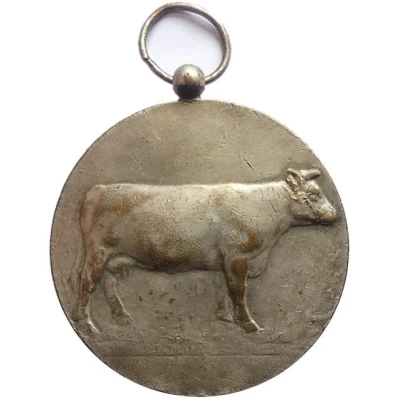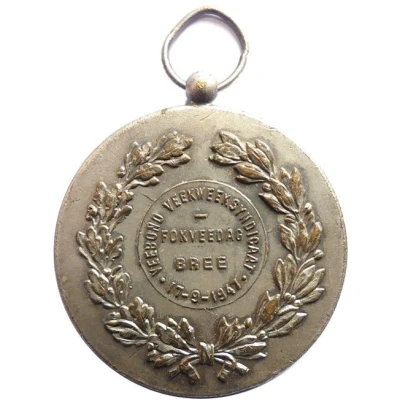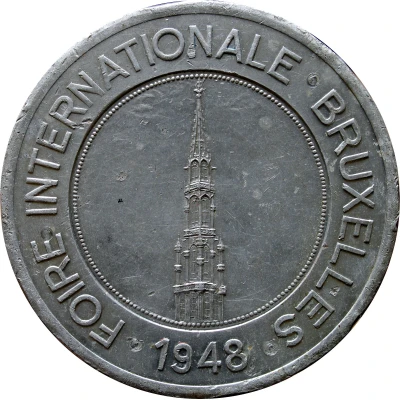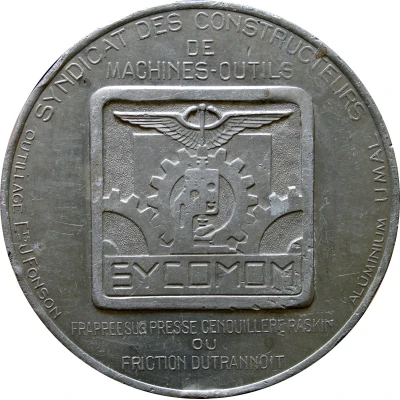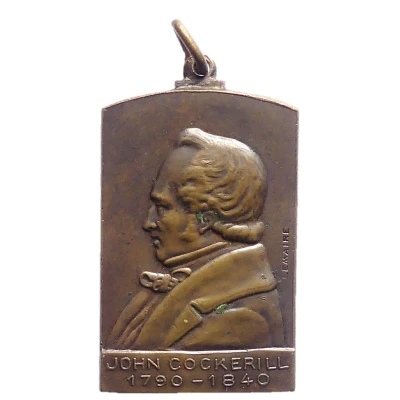
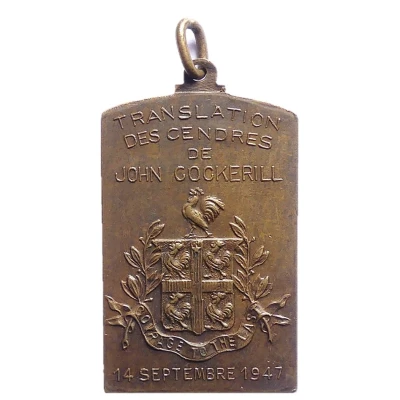

Medal - Moving of the ashes of John Cockerill
1947 year| Bronze | 15.2 g | - |
| Location | Belgium |
|---|---|
| Type | Medals › Commemorative medals |
| Year | 1947 |
| Composition | Bronze |
| Weight | 15.2 g |
| Size | 38 × 24.5 mm |
| Thickness | 2.82 mm |
| Shape | Rectangular (irregular) |
| Updated | 2024-11-12 |
| Numista | N#428618 |
|---|---|
| Rarity index | 97% |
Reverse
Caption in 4 lines, the 1st of which is curved, above John Cockerill's coat of arms featuring 5 roosters and his motto. Date in exergue.
Script: Latin
Lettering:
TRANSLATION
DES CENDRES
DE
JOHN COCKERILL
(dans le blason :)
COVRAGE TO THE LAST
Edge
Plain
Comment
The engraver
Victor Lemaire (1826-1905) worked in Ghent from 1845 to 1900. These dates are anachronistic in relation to the year of the event evoked by the medal: 1947. However, another medal dating from 1927, featuring the same portrait of John Cockerill and also signed by Lemaire (also engraved and in the same place), was produced for the 110th anniversary of the Cockerill Company.
It is therefore likely that this portrait was created at John Cockerill's death in 1840 or at a later date to commemorate his death or a Company event... and that it was subsequently reused.
http://www.numisbel.be/KBGN%20175_De%20Lombaert.pdf
https://www.egmp-vzw.be/Pdf/online_artikels/Muntkl111B.pdf
John Cockerill (1790-1840)John was born in Haslington on August 3, 1790. His parents were William Cockerill and Betty Cockrel (later Cockerill, one of the many variants of this surname). In 1813, John and his brother James took over their father's mechanical engineering factory. In 1817, King William I gave them the opportunity to modernize Liège's steel industry. The Cockerill brothers introduced mass production of iron and steel, and not just crude steel, but also machinery, ships, locomotives and railway equipment.
During the financial crisis (1838-1839), investor confidence collapsed, and John decided to make a fresh start in Russia. In St. Petersburg, he contracted typhus. His condition worsened and he was hospitalized in Warsaw, where he died on June 19, 1840, aged 49. His remains were found in 1867 and repatriated from Warsaw. A monument to his memory was erected on the Place Communale in Seraing in 1871, and this sculpture by Armand Cattier was reproduced the following year for installation on the Place du Luxembourg in Brussels. Cockerill's ashes have been buried at the foot of the monument in Seraing since 1947.
John Cockerill monument in Seraing (photo: Flamenc (CC BY-SA 3.0)
Text translated from https://www.egmp-vzw.be/Pdf/online_artikels/Muntkl111B.pdf
See also: https://connaitrelawallonie.wallonie.be/fr/culture-et-patrimoine/patrimoine/statue-john-cockerill
For the record, both the famous Lion of Waterloo and the rails for the no less famous Bridge over the River Kwai (in Thailand) came out of the forges of Société Cockerill...
https://fr.wikipedia.org/wiki/John_Cockerill
